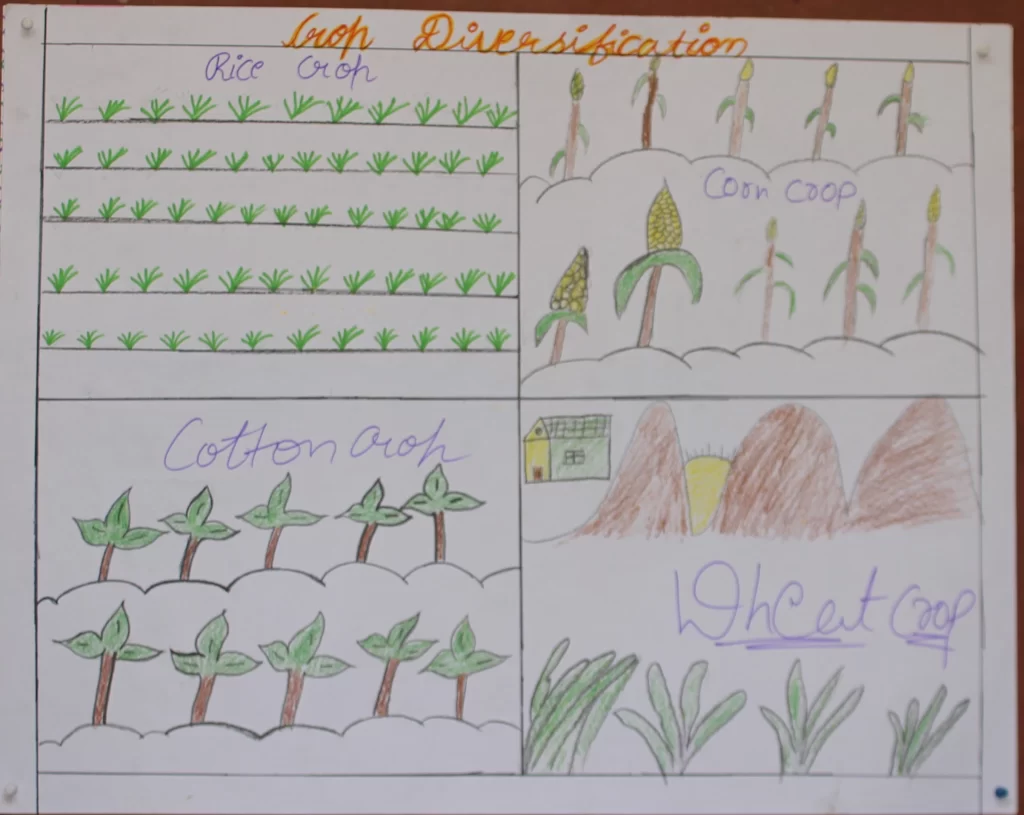Crop Diversification

Crop diversification refers to the practice of growing a variety of crops on a farm instead of relying on a single crop. It is an important strategy for farmers to reduce their dependence on a single crop and to mitigate risks associated with weather, pests, diseases, and market fluctuations.
Crop diversification can have several benefits, such as:
- Risk reduction: By growing a range of crops, farmers can reduce the risk of losing their entire income due to weather events, pests or disease outbreaks, or changes in market demand.
- Soil health: Diversifying crops can help maintain soil health, as different crops have different nutrient requirements and can help prevent soil depletion. This can also help reduce the need for synthetic fertilizers and pesticides.
- Market opportunities: Growing a variety of crops can open up new market opportunities, as different crops have different demand and pricing profiles.
- Biodiversity: Crop diversification can also help support biodiversity on the farm, as different crops can attract a range of beneficial insects and other wildlife.
Some common practices for crop diversification include crop rotation, intercropping, and agroforestry. Crop rotation involves growing different crops on the same land in a sequence, while intercropping involves growing different crops together in the same field. Agroforestry involves integrating trees into farming practices, which can provide additional benefits such as shade, soil improvement, and biodiversity.
